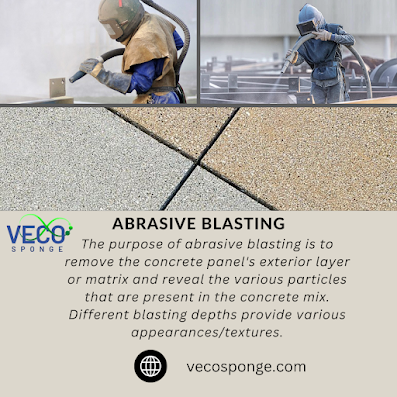what are the different types of abrasive blasting and the materials involved?
What is abrasive blasting?
Abrasive blasting that is also called sandblasting is a process in which compressed air or water is used to project a high-pressure stream of abrasive materials onto the surface. The purpose of this project is to roughen the smooth surface, smooth the hard surface, reshape it, remove rust and contaminants, and quickly clean surfaces for painting and texture application.
The different types of abrasive blasting:
There is a range of abrasive blasting that uses different abrasive materials has different results and is used for different purposes. These are:
Sandblasting:
In this technique, dry silica abrasive particles are projected at high velocities onto the surface. Silica or quartz is the abrasive material used in this blasting at high speeds. The consistency of the abrasive and its sharpness help in achieving the steadiness of finishing of surface. It is commonly used to remove any type of contaminants from the surface being prepared. It is designed in such a way that it is famous for removing rust from objects effectively. Air pressure is used to project these dry abrasive particles onto the surface. The apparatus is handheld and the abrasive is ejected from the nozzle. As its particles spread in the air, it is preferably used in open spaces so that it is not hazardous for the worker to work in it. The silica used in the blasting is dangerous to the health as there is a high chance of the abrasive getting inhaled. Therefore, it is not recommended to be used now.
Vacuum blasting:
This technique is also known as dustless blasting. As the name refers, the residues left are immediately sucked back into the control unit to clean the environment. The blasting machine has a vacuum attached to it. The machine cleans up the surface by removing contaminants from the surface and simultaneously cleaning the air from abrasives with the help of a vacuum. The blasting has the advantage of recycling and reusing spent abrasive which is cost-efficient. But this recycling method makes the vacuum blasting slower than other methods.
Centrifugal blasting:
It is also called wheel blasting. The machine consists of a big wheel that emits the abrasive onto a larger surface. This is used for continuous blasting processes or for surfaces that are huge and have a high surface area. The machine has a motor-operated blade wheel that projects the abrasive at very high speeds onto the object. This technique provides you with an effective cleaning process resulting in uniform surfaces. But the problem is that the machine used is not portable and easy to carry and does not work on uneven surfaces. Just like vacuum blasting, it’s an ideal choice for cleaning as it also collects the debris left behind and recycles the abrasive.
Soda blasting:
The innovation in abrasive blasting is soda blasting. Sodium bicarbonate is used as an abrasive and targeted to the surface with high air pressures. Sodium bicarbonate is known to be an effective abrasive to clean contaminants from the surface. The soda is broken down on an impact with the surface and thus cleans the surface. It’s a much gentler form of blasting and can be easily done at low pressures. This property of soda blasting makes it a good choice to be used on softer surfaces like glass, plastic or chrome. However, the disadvantage is that the abrasive can’t be recycled in the process.
Conclusion:
As various abrasive blasting methods exist, each utilizing specific abrasives, it becomes crucial to consider pertinent factors associated with blasting for optimal results and minimal environmental impact. The selection of blasting methods should carefully weigh all essential elements, including the target material for blasting.



Comments
Post a Comment